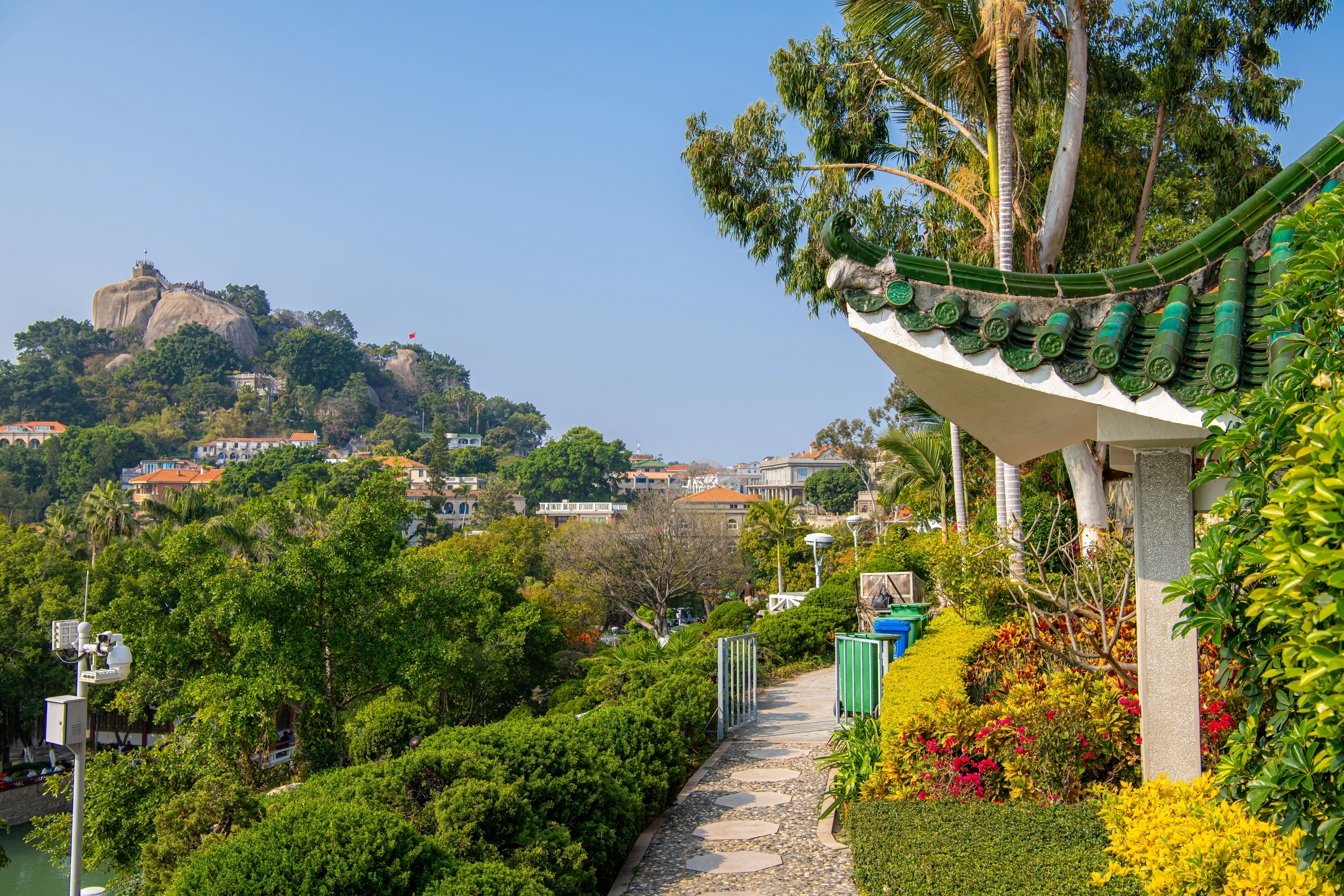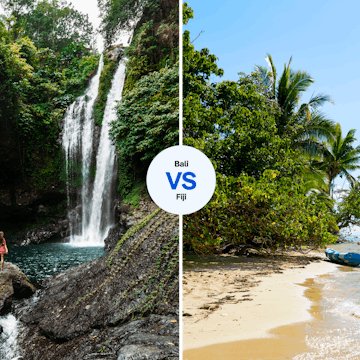

Wuzhizhou Island in Sanya, Hainan. maple90/Shutterstock
China may not spring to mind as a go-to beach destination in Asia – after all, neighbors like Thailand and Indonesia have long dominated the sun-and-sand conversation. But with more than 14,000km (8700 miles) of mainland coastline, China offers its fair share of shoreline surprises.
Hainan, the country’s southernmost province, is often dubbed “China’s Hawaii,” thanks to its palm-fringed beaches and calm vibe. Over in Hong Kong, a hike through the mountains can end with quiet coves of golden sand and clear water. Surf culture is also carving out its niche along China’s coast, from the swells of Riyue Bay to emerging spots up north. Imperial edicts once kept locals inland. Today, China’s seaside stretches draw a mix of sun-seeking families, curious travelers and young couples. Ready to explore? Here are some of the best beaches in China to kick back on.
1. Yalong Bay
Best beach for families
Yalong Bay is the crown jewel of Sanya, a tropical resort town on Hainan Island. This 7km (4-mile) crescent of soft, pale sand curves along clear, aquamarine waters, backed by lush hills and lined with upscale international resorts. Snorkeling and diving are available, though many visitors are just as happy basking on the beach.
Planning: If you’re staying at one of the luxury hotels along the bay, make the most of their private beachfronts, which tend to be quieter and more relaxed than the public stretches.
2. Beidaihe Scenic Area
Best beach for birdwatching
When summer turns stifling in Beijing, locals in the know make a break for Beidaihe Scenic Area, a classic seaside escape just three hours away by bullet train. The beach here has wide stretches of golden sand, and the pace is delightfully unhurried. Birdwatching is big, especially during migration season, and you’ll spot people flying kites or facing off in friendly games of beach volleyball.
Detour: An hour’s drive from Beidaihe brings you to Laolongtou, the easternmost end of the Ming Dynasty’s Great Wall.

3. Red Beach
Best beach for unique photos
A one-of-a-kind spectacle at the mouth of the Liaohe River, Panjin’s Red Beach transforms into a sea of crimson from September to October. The striking color comes from a plant called seepweed, which flourishes in the saline-alkali soil of the tidal flats. There’s no sand here – just a surreal stretch of wetland that feels more like a painting than a beach.
Local tip: Keep your binoculars handy. This protected marshland is a hot spot for over 260 species of migratory birds, including endangered black-billed gulls.
4. Wuzhizhou Island
Best beach for diving
A speck off Hainan’s coast, Wuzhizhou Island has built a name for itself as a tropical escape, often likened to the Maldives – and not without reason. Its crystal-clear waters shimmer in shades of turquoise, revealing a rich underwater world that makes it one of China’s most celebrated diving spots. Divers and snorkelers can expect to see an incredible array of marine life, including over 350 species of coral.
Detour: Don’t miss the Matsu Temple, one of Hainan’s oldest structures.
5. Tai Long Wan
Best beach for camping
Hong Kong has some of Asia’s most beautiful beaches, many just a short ride from the city. For those willing to go farther, Tai Long Wan off the Sai Kung Peninsula delivers. This remote bay comprises four beaches: Sai Wan, Ham Tin Wan, Tai Wan, and Tung Wan. A 40-minute hike leads to Sai Wan. Visitors can swim, camp or refuel at a rustic beachside eatery.
Local tip: To skip the hike, especially in the heat, seasonal speedboats run between Sai Kung Town and the beaches. Just check availability before you go.

6. Tianya Haijiao
Best beach for couples
Translating to “the end of the earth and sea,“ Tianya Haijiao is a poetic, palm-fringed stretch of coastline west of Sanya, often chosen as a wedding backdrop for its dramatic views and romantic lore. Scattered along the shore are five famous rocks: Tianya (Heaven’s Edge), Haijiao (Sea’s Corner), Southern Heaven Rock, the Love Rock, and the Rock of Blessings. Visitors can enjoy typical beachside activities like sunbathing or charter a yacht for an offshore escape.
7. Sun and Moon Bay
Best beach for surfing
Widely considered to be China’s top surfing spot, Sun and Moon Bay (also known as Riyue Bay) in Wanning, Hainan, draws wave chasers from across the country and abroad. The surf clubs double as relaxed hangouts and beginner-friendly schools, perfect for picking up a board for the first time. The waters are clear and the waves can pack a punch. But if surfing’s not your thing, the bay’s turquoise coastline is ideal for other water activities or simply soaking up the sea breeze.
8. Golden Beach
Best beach for walking
Just a stone’s throw from Zhuhai Airport, Golden Beach lives up to its name with a wide expanse of soft sand framed by mountains. Stretching across 3km (1.8 miles), it’s the largest beach in Zhuhai – and one of the most peaceful. It’s a favorite for weekend campers, barbecue lovers, and those who prefer a quiet barefoot stroll along the shore.

9. Gulangyu Island
Best beach for historic exploration
Just off the coast of Xiamen, pedestrian-only Gulangyu Island is a breezy escape with old-world charm. Shaded by towering banyan trees and coconut palms, the island is known for its winding lanes, historic European architecture built in the distinctive Amoy Deco style, and laid-back, beachy atmosphere. A UNESCO World Cultural Heritage Site, Gulangyu is also nicknamed “Piano Island” – a nod to its rich musical heritage. Add in fresh seafood joints and sandy stretches of coastline, and you’ve got a coastal getaway with plenty of soul.
Detour: Don’t miss the piano museum inside Gulangyu’s elegant Shuzhuang Garden.














